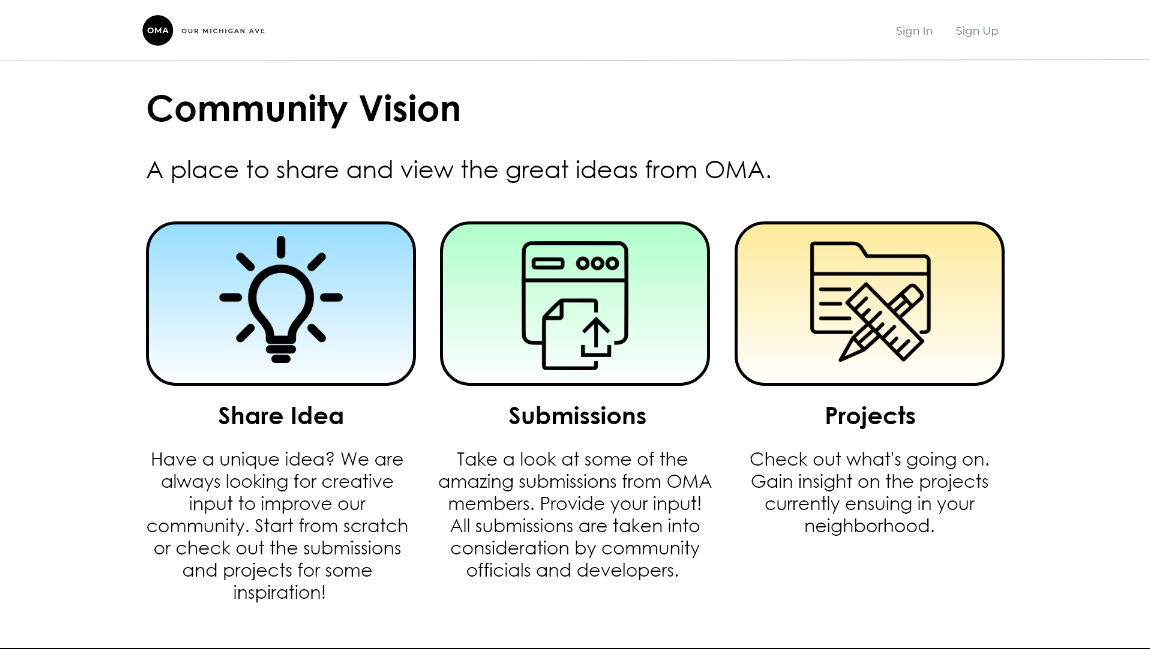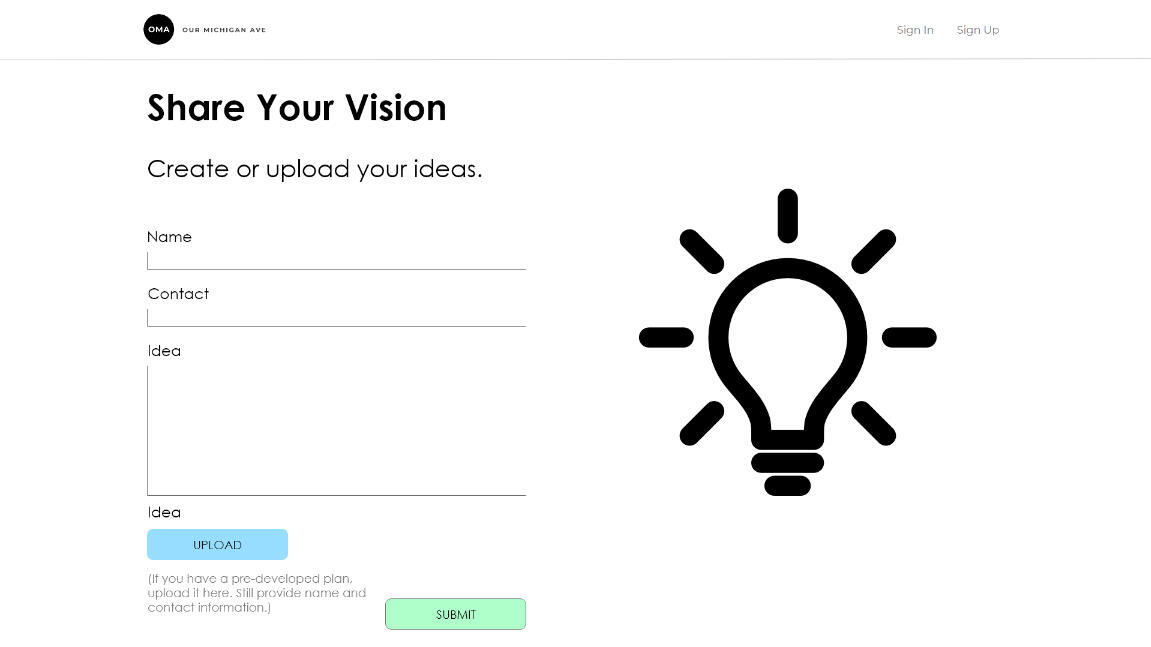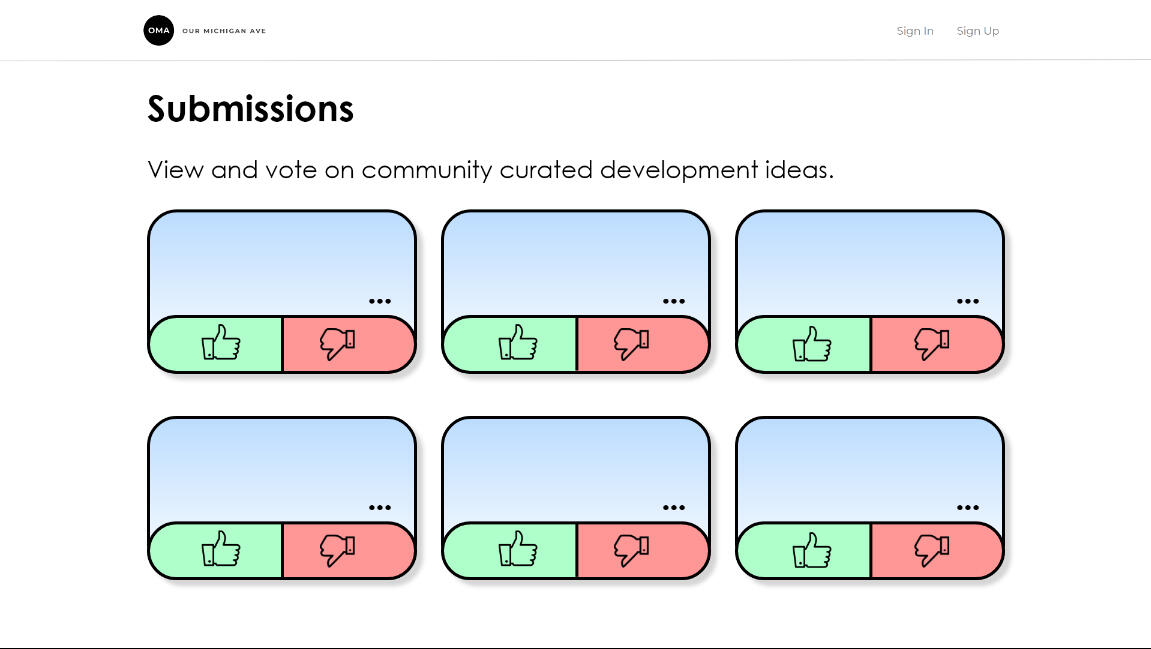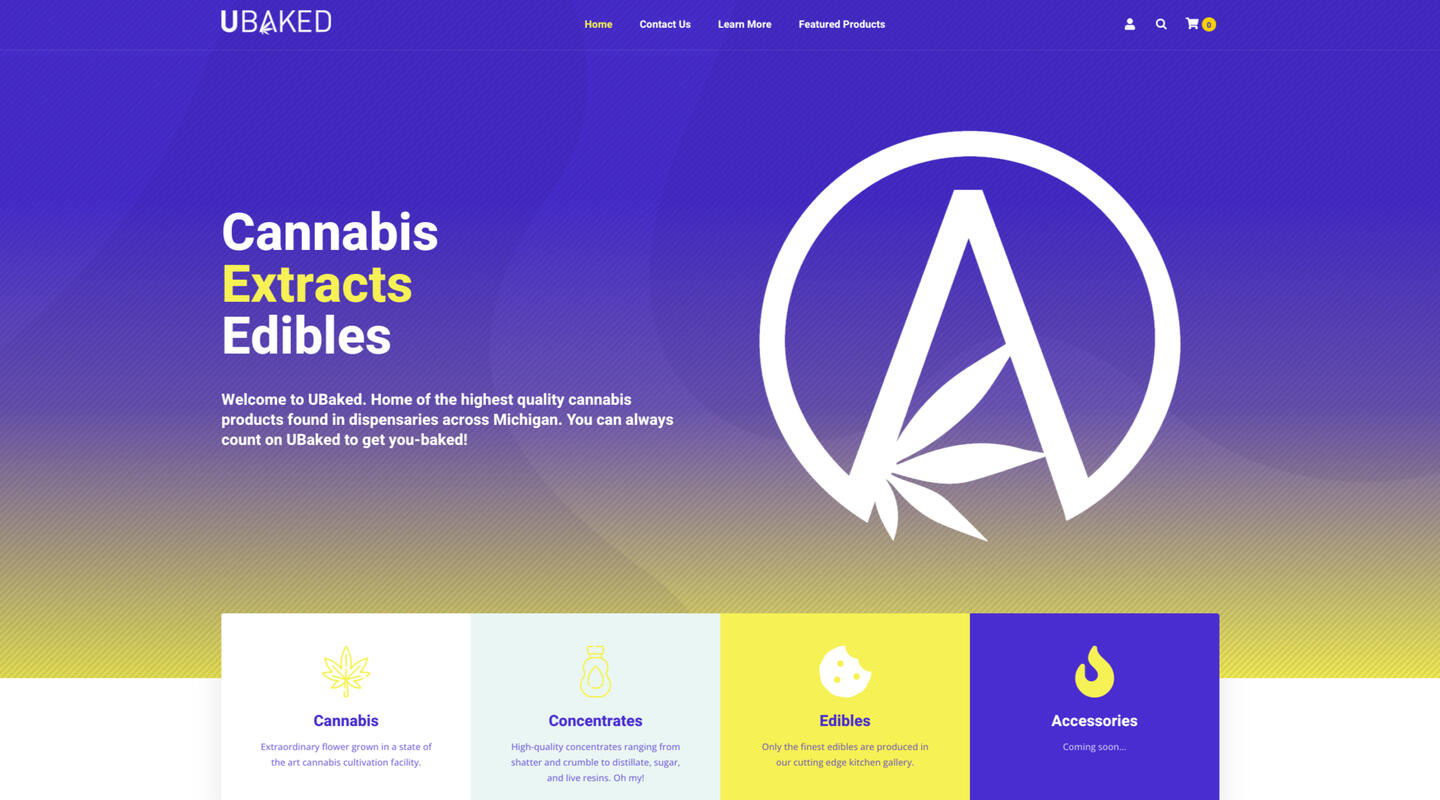
What's Up!
I'm Max Moses, a recent experience architecture graduate of Michigan State University. Professionally, I love discovering the psycological connections between people and technology. I find it fascinating to uncover the variables that make intuitive design so successful. Outside of work, I enjoy learning about cutting edge technology, the world of fasion, and most frequently keeping up with Detroit sports.
Our Michigan Avenue Website Redesign
Project Overview:
In this school project, my group and I undertook the task of redesigning the "Our Michigan Avenue" website, aiming to enhance its user experience and visual appeal. The project spanned several weeks of extensive research, collaboration, and iterative design processes. Our final deliverable was a high-fidelity wireframe presented to over 50 residents of the greater Lansing area, showcasing our commitment to user-centered design and community engagement.Research and Discovery:
To ensure a thorough understanding of the target audience and their needs, we conducted comprehensive research on the community, focusing on the Greater Lansing area. This involved analyzing demographic data, conducting user interviews, and gathering feedback from residents regarding their perceptions and expectations of the "Our Michigan Avenue" website. The research phase played a crucial role in guiding our design decisions and aligning them with the community's desires.Lofi Wireframes Iterations:
Based on our research findings, we proceeded to create low-fidelity wireframes to explore various design concepts and user flows. The iterative process involved continuous feedback loops with team members and instructors, enabling us to refine and enhance the wireframes. We prioritized simplicity, clarity, and ease of navigation, ensuring that the website would effectively serve as a platform for the community to access information and engage with local events and initiatives.High-Fidelity Wireframe and Poster Presentation:
Building upon the insights gained from the lo-fi wireframes, we transformed our design concepts into a visually compelling high-fidelity wireframe. Leveraging design software and digital tools, we meticulously crafted a polished and professional interface, paying attention to typography, imagery, color schemes, and overall visual hierarchy. The high-fidelity wireframe was then printed on large poster paper, allowing us to present the redesigned website to over 50 residents of the greater Lansing area during a community engagement event.Community Engagement and User Feedback:
The presentation of our high-fidelity wireframe to the community was a pivotal moment in the project. It provided an opportunity to receive valuable feedback directly from the target audience. Engaging in open discussions and gathering user insights allowed us to refine our design further and ensure that the website met the needs and expectations of the residents. Their feedback served as a foundation for ongoing improvements and provided validation for our design decisions.Outcomes and Reflections:
The redesign of the "Our Michigan Avenue" website was a collaborative effort that resulted in a visually appealing, user-centric, and community-driven platform. Through weeks of research, iterative wireframing, and engagement with residents, we successfully delivered a high-fidelity wireframe that captured the essence of the community's desires. The project taught us the importance of user research, collaboration, and adaptability when working on complex design projects.Moving Forward:
Although the project concluded with the presentation of the high-fidelity wireframe, we recognize the importance of continuous improvement. Future steps may involve further user testing, incorporating additional features, and translating the wireframe into a fully functional website. By maintaining an open line of communication with the community and leveraging their feedback, "Our Michigan Avenue" can evolve into an invaluable resource that truly reflects the needs and aspirations of the Greater Lansing area.Conclusion:
The "Our Michigan Avenue" website redesign project exemplified our group's commitment to user-centered design and community engagement. Through weeks of research, iterative wireframing, and a poster presentation to over 50 residents, we successfully created a high-fidelity wireframe that encapsulated the desires of the community. This experience enhanced our skills in research, design, and communication, preparing us for future endeavors in delivering impactful digital experiences that serve the needs of diverse audiences.





UBaked Cannabis and Extracts Website Design
Project Overview:
In this portfolio project, I embarked on a website redesign journey for UBaked Cannabis and Extracts, a cannabis company specializing in high-quality products. With limited guidance and my first experience in website redesign, the project presented an opportunity for me to showcase my creativity, adaptability, and problem-solving skills. The objective was to create a visually appealing and user-friendly website that effectively represented UBaked's brand identity and enhanced the user experience for their target audience.Research and Discovery:
Given the lack of specific guidance, I took the initiative to conduct thorough research and immerse myself in the cannabis industry, studying competitors' websites and gathering insights into user preferences. This research phase allowed me to better understand UBaked's unique selling points, target demographic, and industry trends, providing a solid foundation for the subsequent design decisions.Information Architecture and Wireframing:
With a clear understanding of UBaked's brand essence and target audience, I proceeded to establish a well-organized information architecture for the website. Through wireframing, I sketched out the layout and structure, focusing on clear navigation, intuitive user flows, and strategic placement of key information and product offerings. This process helped establish a visual hierarchy and set the foundation for the website's design and functionality.Visual Design:
Leveraging the brand's existing visual identity, I crafted a cohesive and visually appealing design language for the website. Considering UBaked's target audience and the industry's aesthetics, I created a clean and modern design that incorporated vibrant colors, high-quality imagery, and a sense of sophistication. The visual elements were carefully selected to align with the brand's personality while maintaining a professional and trustworthy image.User Experience and Interaction:
To enhance the overall user experience, I focused on optimizing the website's functionality and interactivity. This included implementing clear call-to-action buttons, incorporating intuitive navigation menus, and ensuring seamless user flows throughout the site. Interactive elements such as hover effects, animated transitions, and microinteractions were strategically integrated to engage users and create a memorable browsing experience.Mobile Responsiveness:
Recognizing the importance of mobile browsing, I ensured that the website design was fully responsive and optimized for various devices and screen sizes. By employing responsive design principles, I aimed to deliver a seamless and consistent user experience across desktop, tablet, and mobile platforms.Outcome and Reflection:
Despite the project's challenges and limited guidance, the website redesign for UBaked Cannabis and Extracts proved to be a successful endeavor. The final website showcased a visually appealing design, intuitive navigation, and improved user experience. Through this project, I gained valuable insights into the process of website redesign, honed my design skills, and learned the importance of adaptability and resourcefulness when working with minimal guidance.Moving Forward:
While the website redesign achieved the desired objectives, there is always room for continuous improvement and iteration. I recommend ongoing user testing and feedback gathering to identify areas for enhancement and further optimize the website's performance. By actively seeking user insights and monitoring analytics, UBaked can ensure that their website remains relevant, engaging, and aligned with evolving user needs.Conclusion:
The UBaked Cannabis and Extracts website redesign project demonstrates my ability to take initiative, adapt to new challenges, and deliver visually appealing and user-friendly digital experiences. This experience has further solidified my passion for website design and deepened my understanding of user-centered design principles. I am excited to continue refining my skills and contributing to future website redesign projects.
Saving Monkeys Brand Refresh
Project Overview:
In this portfolio project, I had the privilege of collaborating with the non-profit organization "Saving Monkeys" to revamp their brand identity and spearhead their digital transformation. The project encompassed various components, including logo iterations, website redesign mock-ups, the creation of mobile app wireframes, and the development of a mobile app prototype. The objective was to create a cohesive and visually compelling brand image while leveraging digital platforms to enhance the organization's outreach and impact.Logo Iterations:
To capture the essence of Saving Monkeys' mission and values, I embarked on an iterative logo design process. Through thorough research and concept exploration, I crafted a series of logo options that conveyed the organization's dedication to wildlife conservation and primate protection. Collaborating closely with the client, we refined the logo design to create a visually engaging and memorable emblem that represented the core identity of Saving Monkeys.Website Redesign Mock-up:
Understanding the significance of a strong online presence, I embarked on a comprehensive website redesign for Saving Monkeys. By conducting user research and leveraging best practices in UX design, I created intuitive wireframes and translated them into visually appealing mock-ups. The website design aimed to inspire empathy, educate visitors about the organization's initiatives, and provide an effortless donation process. The mock-ups showcased an intuitive navigation structure, compelling visuals, and engaging storytelling elements that resonated with the target audience.Mobile App Wireframes and Prototype:
Recognizing the importance of mobile accessibility, I embarked on the creation of wireframes for a dedicated Saving Monkeys mobile app. Through a user-centered design approach, I developed intuitive user flows, screen layouts, and interaction patterns that optimized the mobile experience. The wireframes effectively conveyed the app's functionalities, such as donation options, educational resources, and community engagement features. Building upon the wireframes, I developed an interactive mobile app prototype to provide a realistic preview of the app's look, feel, and functionality.Outcome and Impact:
The brand revision and digital transformation initiatives resulted in a revitalized and impactful identity for Saving Monkeys. The refined logo resonated with the organization's supporters and conveyed a strong sense of purpose. The website redesign provided a seamless and engaging user experience, enabling the organization to effectively communicate their mission, share success stories, and drive donations. The mobile app prototype showcased the potential for increased community engagement, offering a user-friendly platform for educational content, events, and easy donation opportunities.Lessons Learned:
Throughout this project, I learned the importance of aligning design elements with a non-profit's mission and values. Collaborating closely with the client and incorporating user feedback allowed for continuous improvement and ensured that the final deliverables truly served the organization's goals. This project reinforced the significance of leveraging design to create positive impact and drive meaningful change.Conclusion and Next Steps:
The brand revision and digital transformation project for Saving Monkeys exemplify my ability to craft compelling visual identities, design user-centric websites, and develop interactive mobile app prototypes. Moving forward, I recommend implementing user testing to gather feedback and refine the website and mobile app design further. By continuously optimizing the digital platforms, Saving Monkeys can amplify their outreach efforts and make a lasting impact in primate conservation and wildlife preservation.This portfolio project showcases my dedication to using design as a catalyst for social change and highlights my ability to create meaningful and engaging digital experiences for non-profit organizations.

Information Analysis at Amtax
-Authored client-facing Documents using the Adobe Suite.
-Collaborated with management to improve client portal experience and complete website re-design.
-Responsible for gathering and generating financial statements used by Tax Professionals.
-Execute data mining reports using proprietary software to assist management with quality control and
efficiency.